
Planetary Picture of the Day
Week of August 15, 2022
Mimas, Io, Martian fog and a Saturnian vortex – wow!
Monday, August 15, 2022
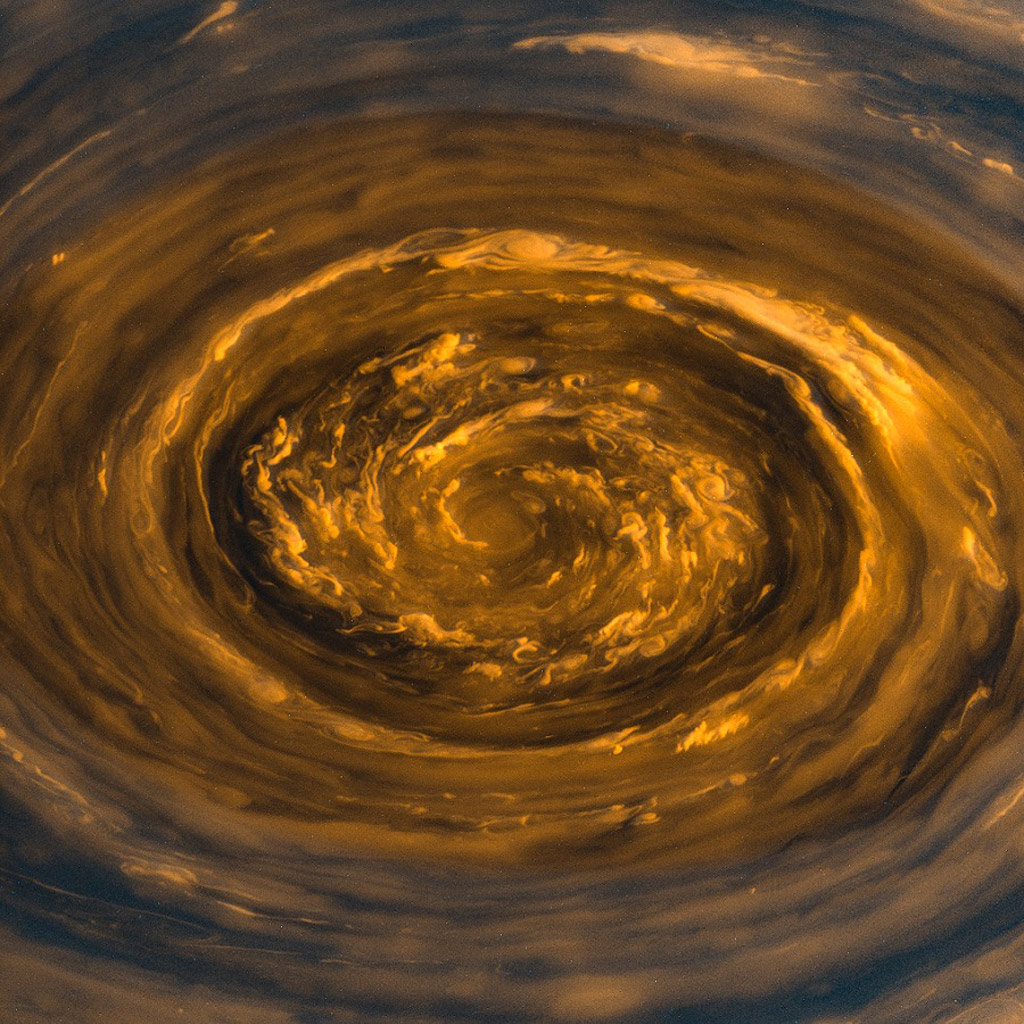
Credit: NASA/JPL/SSI/Kevin M. Gill
Vortex at Saturn's North Pole
This is a gigantic storm at the very center of the north pole of Saturn. It's 1,600 km across. This image from NASA's Cassini mission was taken on Nov. 27, 2012, with Cassini's narrow-angle imaging camera.
Tuesday, August 16, 2022
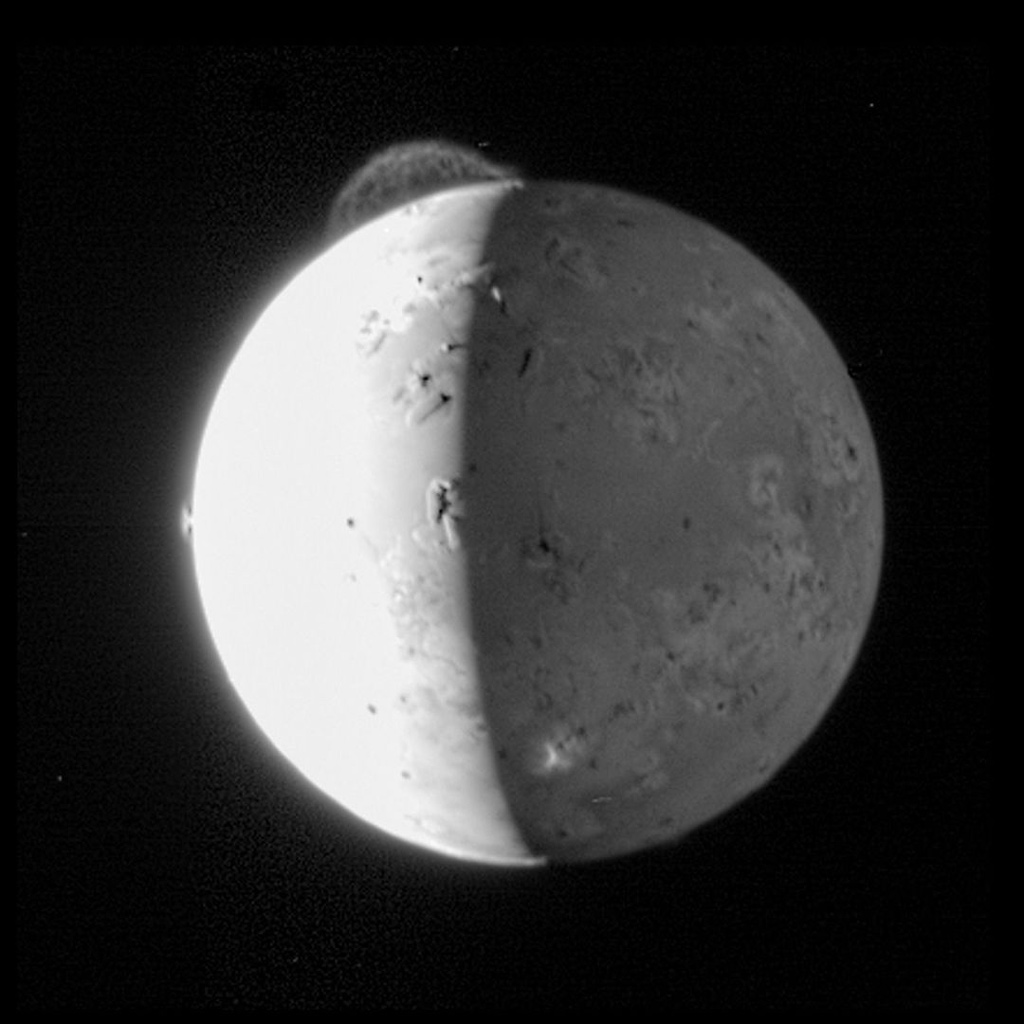
Credit: NASA/Johns Hopkins APL/Southwest Research Institute
Io from New Horizons
NASA's New Horizons spacecraft captured this dramatic image of the enormous 180-mile (290-kilometer) high plume from Io’s Tvashtar volcano in February 2007. The remarkable filamentary structure in the plume is similar to details glimpsed faintly in 1979 Voyager images of a similar plume produced by Io's volcano Pele. No previous image by any spacecraft had shown these mysterious structures so clearly - though the proposed Io Volcano Observer mission would fly even closer to the moon to gain unprecedented insight into Io's extreme volcanic activity.
Wednesday, August 17, 2022
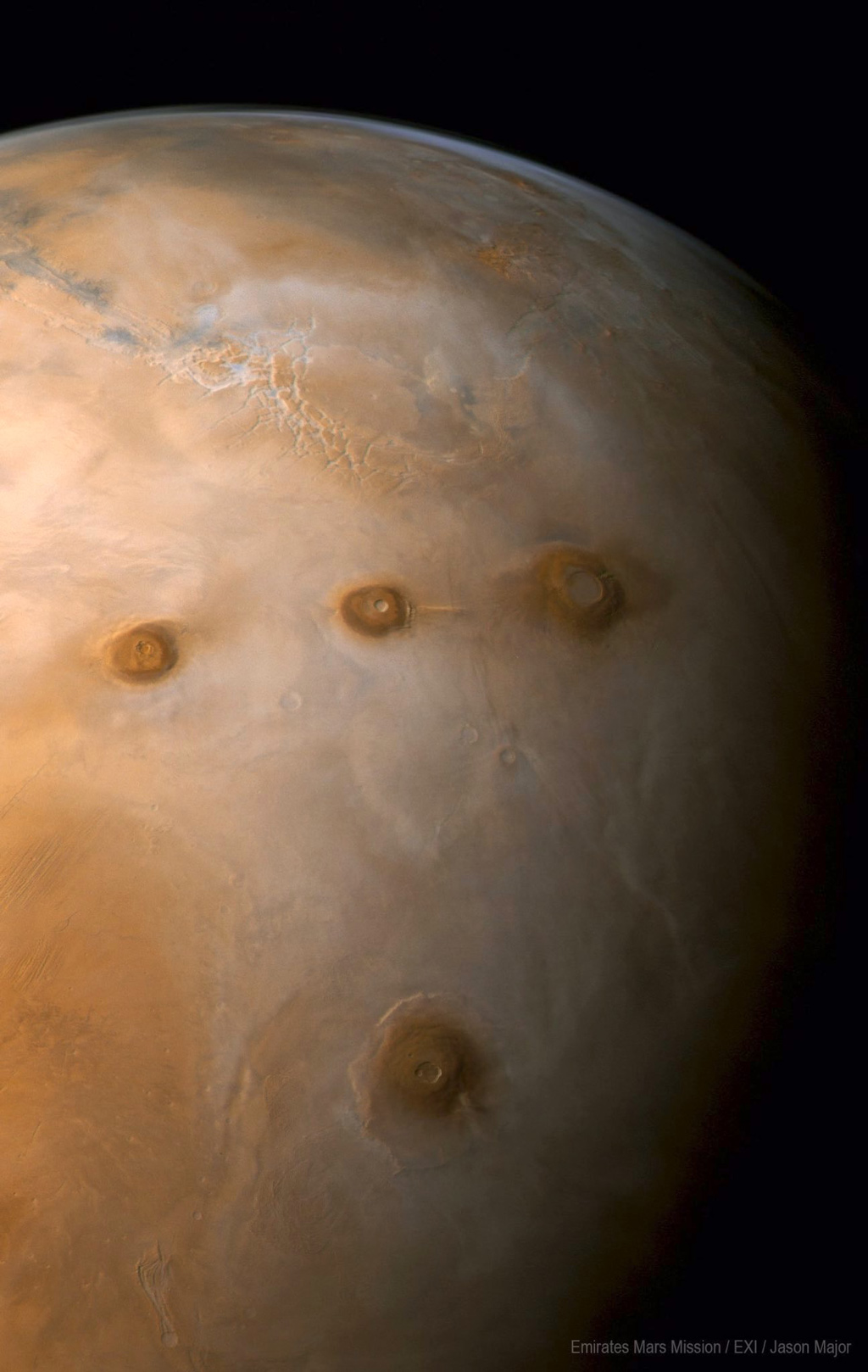
Credit: MBRSC/UAE Space Agency; Processing: Jason Major
Martian Fog and Volcanoes
A fog-filled Noctis Labyrinthus (top), the three Tharsis Montes (middle), and Olympus Mons (bottom) imaged by the United Arab Emirates' Hope Mars Mission spacecraft on August 9, 2021. North on Mars here is to the bottom left.
Thursday, August 18, 2022
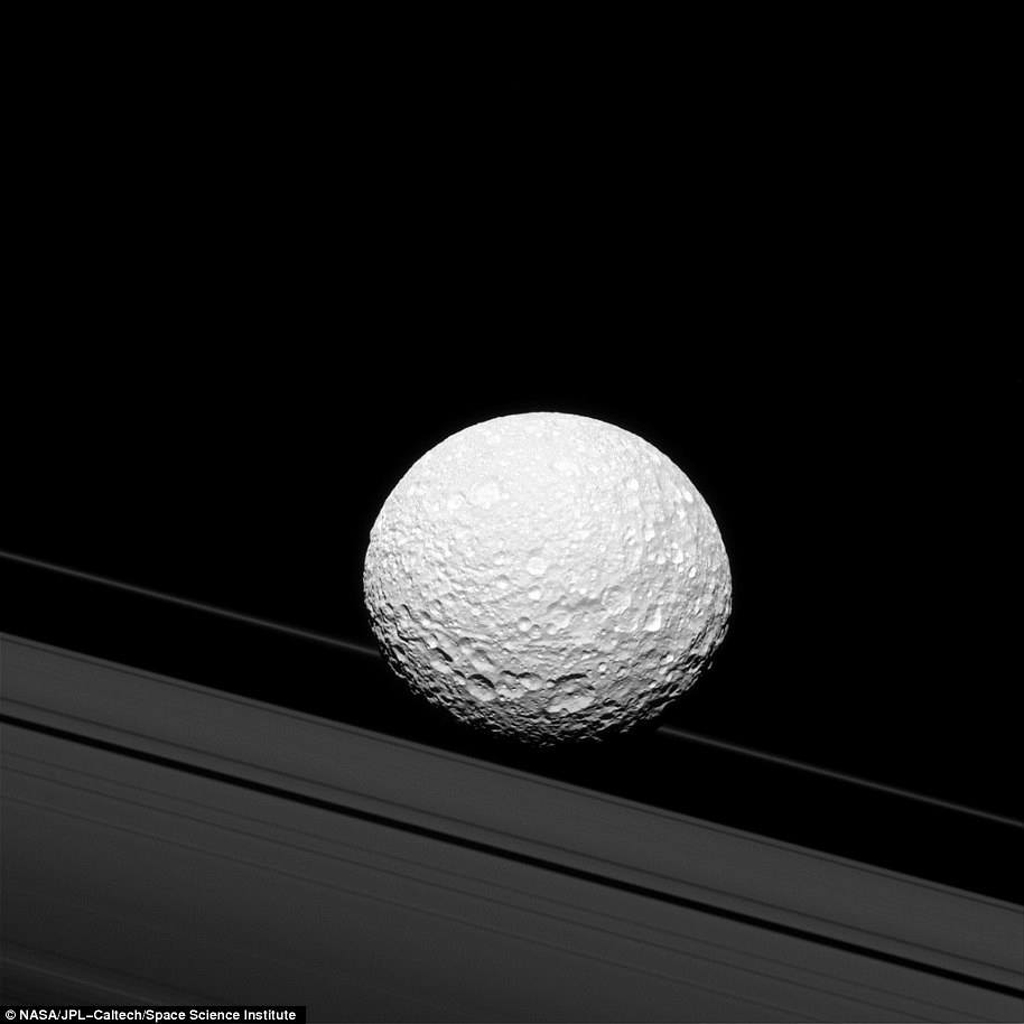
Credit: NASA / JPL-Caltech / Space Science Institute
Crash Course?
It may look as though Saturn's moon Mimas is crashing through the rings in this Cassini image, but it is merely an optical illusion due to the position of the spacecraft at the time. Mimas is actually 45,000 kilometers away from the rings. There is a strong connection between the icy moon and Saturn's rings, though. Gravity links them together and shapes the way they both move. The gravitational pull of Mimas creates waves in Saturn's rings that are visible in some Cassini images.
Friday, August 19, 2022
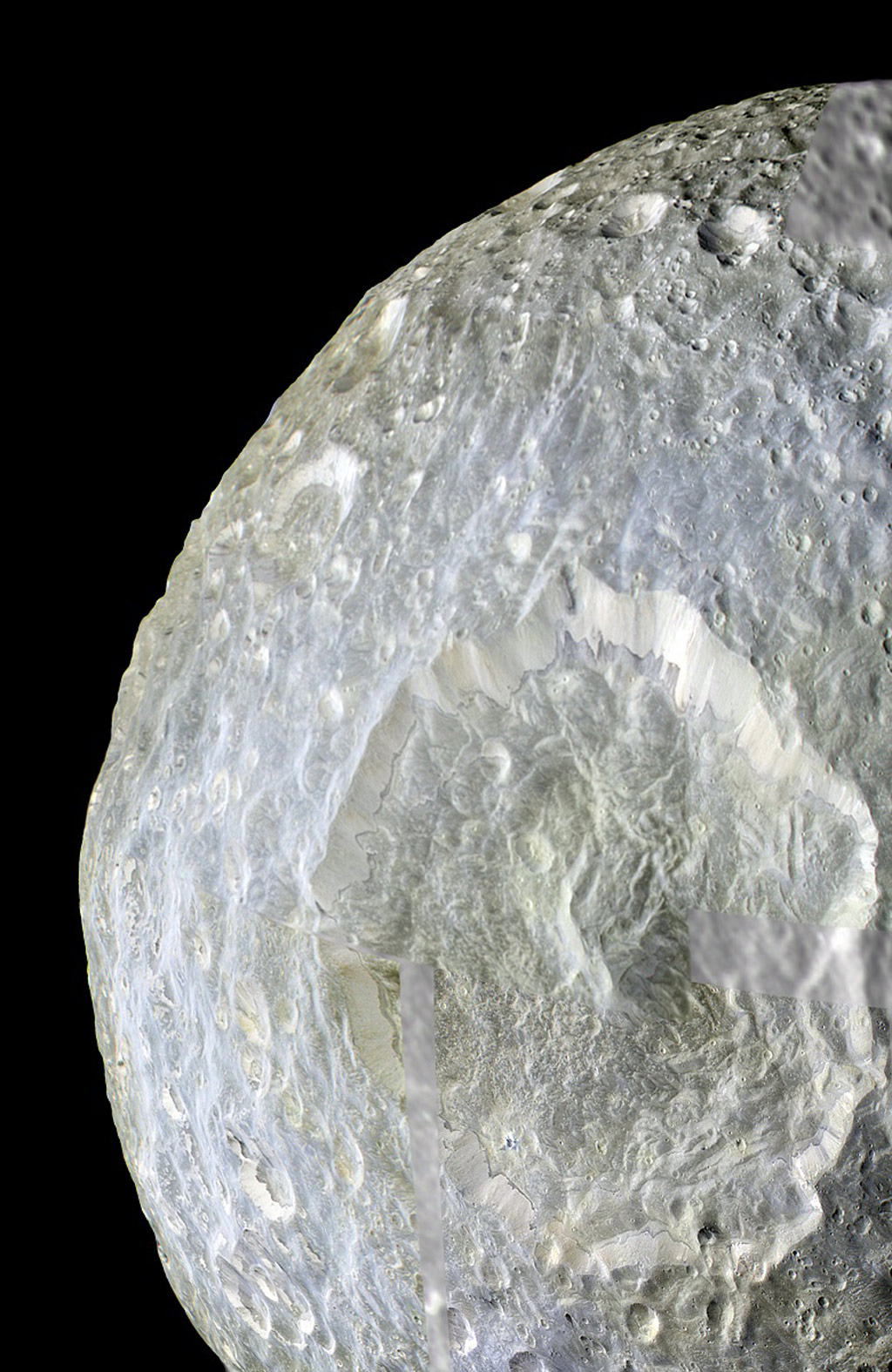
Cassini Imaging Team, ISS, SSI, JPL, ESA, NASA
Herschel Crater on Mimas
Mimas, a small 400-kilometer-diameter moon of Saturn, is host to 130 kilometer-diameter Herschel crater, one of the larger impact craters in the entire solar system. The robotic Cassini spacecraft orbiting Saturn in 2010 recorded this startling view of small moon and big crater while making a record 10,000-kilometer close pass by the diminutive icy world.
Shown in contrast-enhanced false color, the image data reveal more clearly that Herschel's landscape is colored slightly differently from the heavily cratered terrain nearby. The color difference could yield surface composition clues to the violent history of Mimas. Of course, an impact on Mimas any larger than the one that created the 130-kilometer Herschel might have destroyed the small moon.





